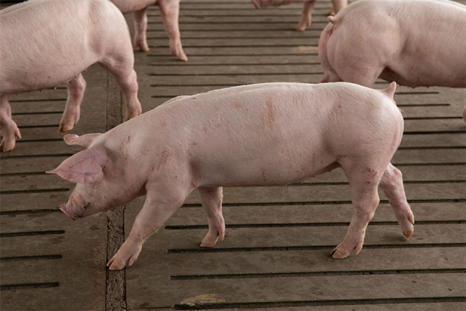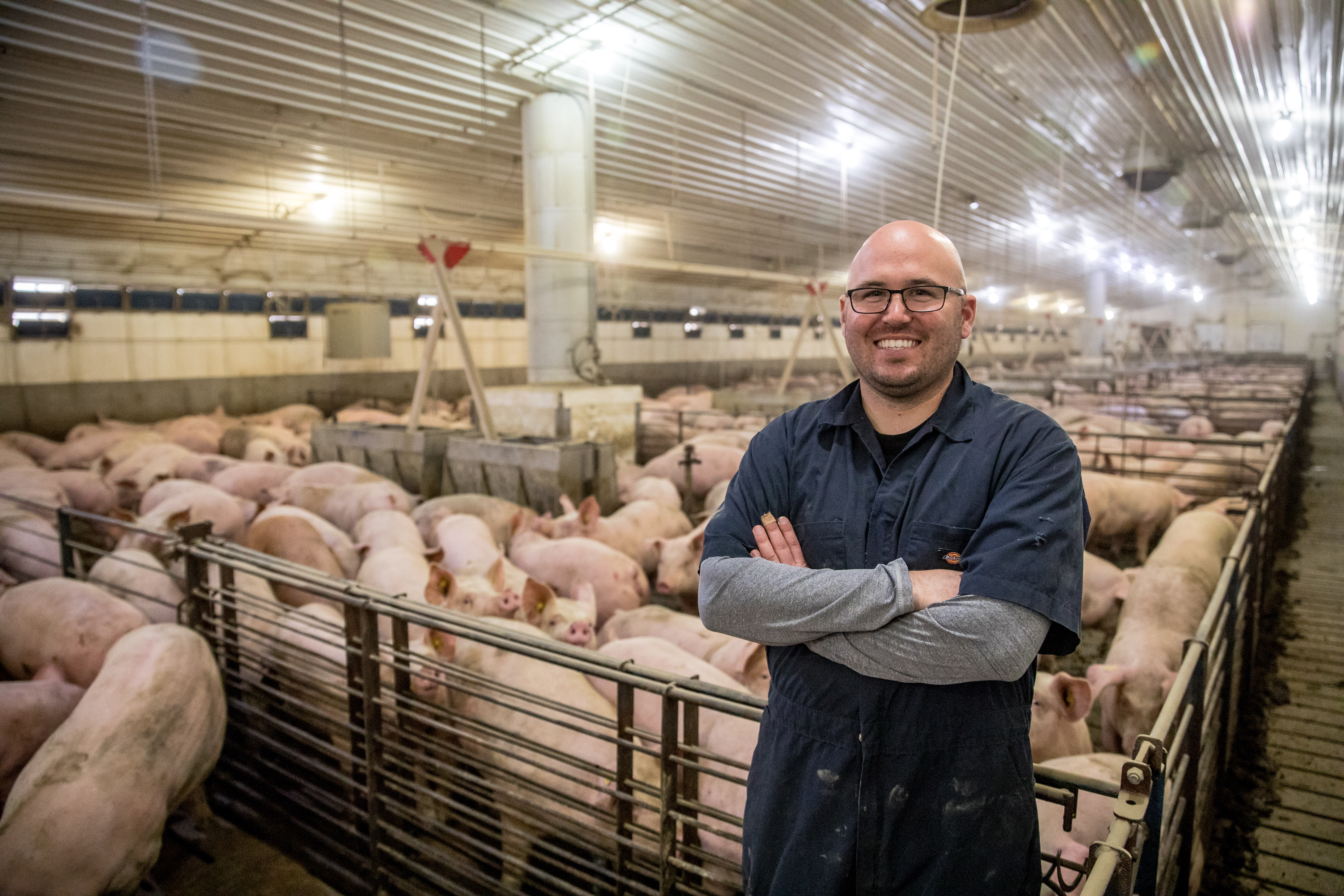The second article in a two-part series
You’ve invested a lot in replacement gilts. They’re the future of your swine herd. Are you paying enough attention to the little details that make a big impact with successful gilt development? To help your gilts realize their genetic potential, it’s essential to provide a healthy, clean environment with adequate space and proper nutrition to ensure your gilts’ well-being. Tailoring these to meet their specific needs will enhance their lifetime performance. It’s important to do the right thing each day from the start.

Acclimate Incoming Gilts
To avoid introducing new diseases into the herd, follow these biosecurity standards on newly arrived gilts:
- Keep gilts in isolation and separated from the main herd for at least 28 days.
- Complete chores in the isolation/quarantine barn last each day. This reduces the chances of transferring any existing disease organisms to the main herd.
- Use an all-in, all-out pig flow.
- Work with your veterinarian to develop a specific diagnostic plan before introducing gilts to the main herd.
Next, follow these gilt acclimatization practices:
- Use a combination of natural exposure and vaccinations to expose incoming gilts to pathogens in the receiving herd.
- Achieve natural exposure by direct contact with pigs already on the farm, but follow specific timeframes:
- Not before 20 to 22 weeks of age
- Not within 3 weeks of breeding
- Implement a vaccination program, based on health challenges.
- No health interventions within 3 weeks of breeding
Protect Gilt Health
Focusing on standard animal care also helps ensure proper gilt development. Observe pigs daily to ensure proper feed and water availability and spot signs of illness or injury. Early detection is the first step to effectively treat sick gilts. Also, ensure proper maintenance of barn flooring, halls, gates and pens to help avoid injury/lacerations to pigs and reduce gilt losses.
Feed Gilts Right
Proper nutrition is another key to successful gilt development. Give these young animals all the nutrients they need to grow and become healthy, productive sows. The right rations at this stage will have a positive impact on sows’ lifetime performance.
You can adjust energy level of the feed to moderate gilts’ growth. Pay attention to the SID (standardized ileal digestible) lysine-to-energy ratio (Lys:MCal) for adequate growth and development.
Follow these 5 PIC recommendations to ensure adequate growth and development of your gilts:
- Energy Levels:
- For gilts below 200 lb or 90 kg, feed a Lys:MCal at 97% of that recommended for market gilts
- Minimum energy recommended: 1,420 Kcal ME/lb or 3,131 Kcal ME/kg
- Once gilts reach 200 lb or 900 kg we recommend to use a ration similar to a gestation diet 1.86 g of Lys:Mcal ME or 2.51 g of SID Lys:Mcal of NE
- Minimum energy recommended: 1,360 Kcal ME/lb or 2,998 Kcal ME/kg
- If the desired weight is not met at first breeding, continue to feed upcoming gilts groups 97% of market gilts recommendations
- Be careful not to feed a Lys:Mcal ratio below 85% of the requirement, at the beginning of any dietary phase; this will increase the chances of abnormal behavior.
- For gilts below 200 lb or 90 kg, feed a Lys:MCal at 97% of that recommended for market gilts
- Calcium and Phosphorus
- Biological function:
- Developing gilts have higher requirements for Ca and P than market pigs of a similar age.
- These two minerals contribute to skeletal development, fetus development and sufficient milk yield.
- Deficiencies of these minerals early in life contribute to impaired bone mineralization, reduced bone strength and lower mineral reserves.
- Requirements:
- Phosphorus and calcium levels for developing gilts should be approximately 8% greater than PIC’s recommendations for market gilts.
- Analyzed calcium and analyzed phosphorus should be 1.25 to 1.50
- Biological function:
- Vitamin and trace-minerals:
- Levels for developing gilts should be higher than levels fed to finishing pigs.
- Additional vitamins and minerals, including folic acid, biotin, thiamine and pyridoxine, are required for healthy reproduction.
- Feed particle size:
- PIC recommends 750 to 900 microns.
- If the larger range isn’t feasible, 550 to 650 microns is an acceptable range.
- In addition, follow different feeding programs at different growth stages:
- 50 to 130 lb (23 to 59 kg): GDU-specific diet, commercial gilt diet, or lactation diet
- 130 to 200 lb (59 to 91 kg): GDU-specific diet(s); multiple diets may be used
- 200 lb (91 kg) to breeding: GDU-specific diet or gestation diet
Keep Track of Gilt Weights
Various tools are available to track your gilts’ weight and help you evaluate/improve feeding programs.
If you don’t have a scale, use a girth tape, which measures the entire circumference of the gilt, or PIC’s flank tape, which
takes the guesswork out of determining weight. Measure gilts from flank to flank to determine approximate weights:
- Red (gilt is too light to breed)
- Green (gilt is in the correct weight range and is eligible to breed)
- Yellow (gilt is overweight, in the 350+ to 450-pound range)
Fine-tuning your swine management practices will help you raise the best replacement gilts possible. Unlike market pigs,
replacement gilts are the future of your herd. Treat them right to ensure their well-being and allow them to express their
full genetic potential.






